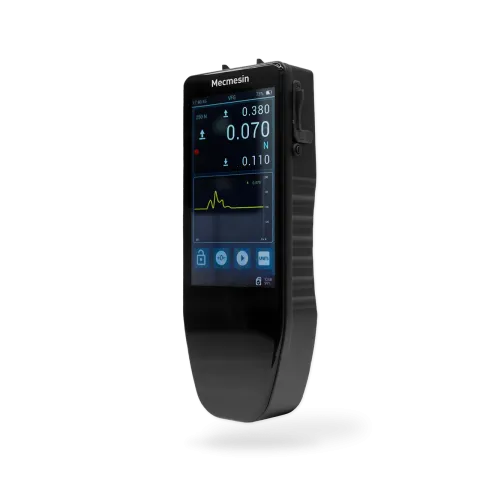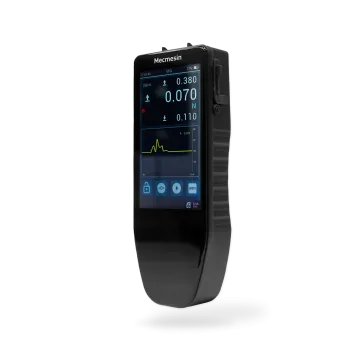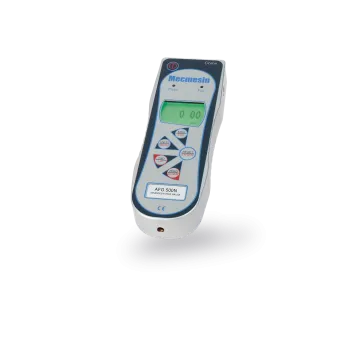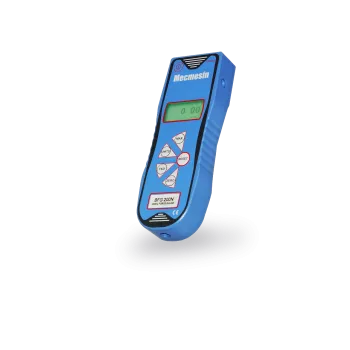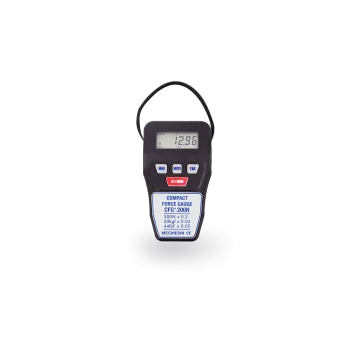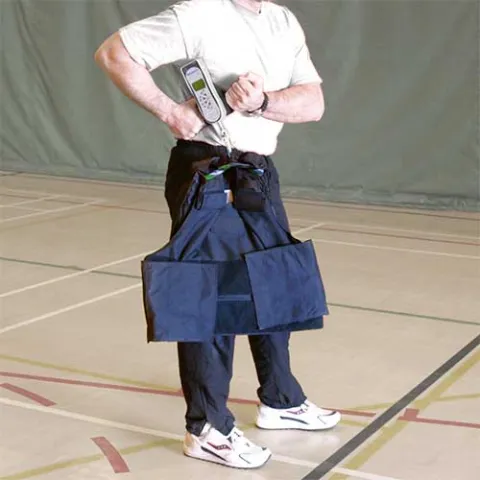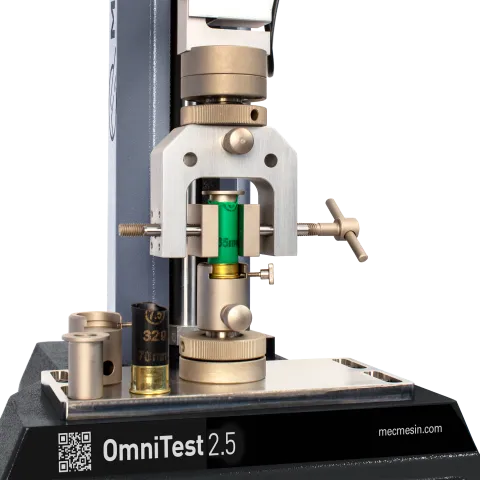Shotgun cartridge separation force and crimp strength testing


Solution
- Motorised force testing system
- Dedicated fixtures matched to ammunition size
Benefits
- Simple to use in a production environment
- Ultimate in repeatable testing with interchangeable accessories
- Optional ability to capture data and analyse results
Requirement
When making small arms ammunition, such as shotgun cartridges, the shot pellets, wad and powder are contained in a plastic case. This plastic case is seated at the bottom into a brass alloy base and the contents are held in place within the case by either a rolled turnover (RTO) or a crimp closure. This closure acts as an intrinsic element in managing the pressure and velocity of the cartridge.
Testing the separation force of the base from the plastic case together with the seal strength of the RTO/crimp closure, provides a key indication of the quality of the cartridge. If pull strengths are inconsistent, then variation will often translate into irregular trajectories and excessive spray patterns for the shot pellets. Since repeatability is key to effective targeting of ammunition, ballistics engineers work tirelessly to produce reliable ammunition that will perform the same way time and time again
When performing a pull strength test on shotgun cartridges they need to be pre-prepared by firstly cutting the plastic case in half and removing the contents. The lower half with the brass alloy base is the first sample-type. The upper half with the RTO/crimp closure is the second sample-type.
Solution
Mecmesin worked with a leading Middle-Eastern manufacturer of ammunition machinery to deliver a pull tester, which could clearly identify the separation pull-force and seal strength of their shotgun cartridges. A key requirement for the tester was its ability to perform the tests quickly and easily by its operators, with minimum changeover of gripping fixtures.
Specially developed grips were designed to facilitate testing.
Base separation test
A slotted C-shaped lower fixture was designed to secure around the groove in the rim of the brass base. A metal insert, with a central clearance hole, was positioned inside the plastic case to act as reinforcement.
The plastic case is then secured between the 2 jaws of a Vice Grip with wave-form profiled jaw faces, which is connected to the loadcell of the tensile tester. The grip is driven at a fixed displacement rate, to ensure optimum repeatability, until the cartridge is pulled to complete separation.
The maximum tension force in newtons is recorded in the force gauge as the separation strength.
Crimp seal test
The launching end of the shotgun case is typically sealed by either roll-crimping or star-crimping to form a petal-like star shape, which keeps the contents waterproof.
The same metal insert is used as reinforcement inside the plastic case, which is then secured between an extended Vice Grip. A compression plunger, attached to the loadcell, is then driven at a constant rate down the clearance holder of the insert until it penetrates through the star-shaped seal.
The maximum compression force in newtons is recorded on the force gauge as the crimp seal strength.
Test equipment
- MultiTest-dV motorised pull/compression tester
- AFG 2500N digital force gauge
- Slotted C-shape lower fixtures for various calibre cartridges (PSV19128)
- Upper Vice Grips and metal inserts for various calibre cartridges (MEC240K-S30)





